Paul Tudor Jones sees potential market rally after late October
Introduction & Market Context
Stride Inc. (NYSE:LRN) delivered its fourth quarter and full fiscal year 2025 earnings presentation on August 5, 2025, showcasing record financial performance across key metrics. The education technology company reported its ninth consecutive year of revenue growth, driven by strong enrollment trends in both its General Education and Career Learning segments.
Despite the positive results, Stride’s stock closed down 1.6% at $130.31, though it recovered slightly with a 0.53% gain in after-hours trading. The company’s performance continues to reflect the accelerating shift toward virtual education and expanded school choice options.
Quarterly Performance Highlights
Stride reported impressive fourth quarter results, with revenue reaching $653.6 million, a 22% increase year-over-year, exceeding analyst expectations of $621.7 million. Adjusted operating income for Q4 jumped 49% to $130.6 million, while adjusted EBITDA grew 41% to $158.4 million.
The company’s adjusted earnings per share for the quarter came in at $2.29, significantly outperforming the forecast of $1.76 by 30.11%, according to the earnings data.
As shown in the following chart of quarterly financial highlights:
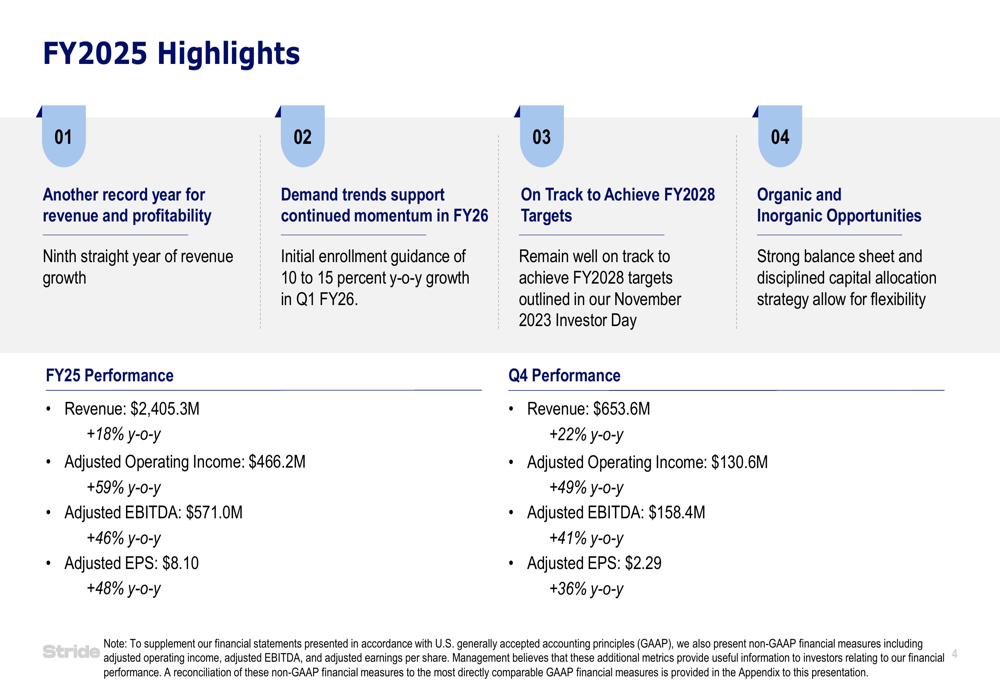
Detailed Financial Analysis
For the full fiscal year 2025, Stride achieved record results across all key financial metrics. Annual revenue grew 18% year-over-year to $2.41 billion, while adjusted operating income surged 59% to $466.2 million. Adjusted EBITDA increased 46% to $571.0 million, and adjusted EPS rose 48% to $8.10.
The company’s five-year compound annual growth rate (CAGR) stands at an impressive 18% for revenue and 50% for adjusted operating income, demonstrating consistent long-term performance.
The following chart illustrates this sustained growth trajectory:
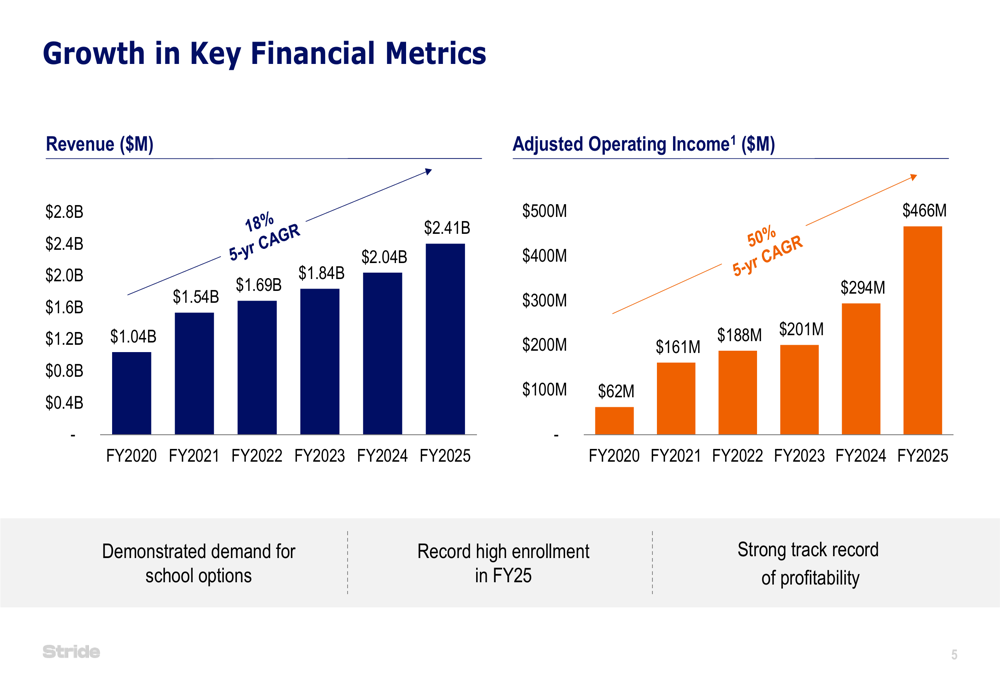
Enrollment trends remained robust throughout fiscal 2025, with average enrollment increasing 20.4% year-over-year to 234,000 students. The General Education segment grew 13.2% to 137,700 students, while Career Learning enrollment surged 32.5% to 96,300 students.
Revenue in the Career Learning segment showed particularly strong growth at 27.4% year-over-year, reaching $956.6 million, though the Adult segment within Career Learning experienced a 19.5% decline. The company’s enrollment data suggests continued momentum, with Stride anticipating 10-15% year-over-year enrollment growth for Q1 FY2026.
The detailed enrollment and revenue breakdown is illustrated here:
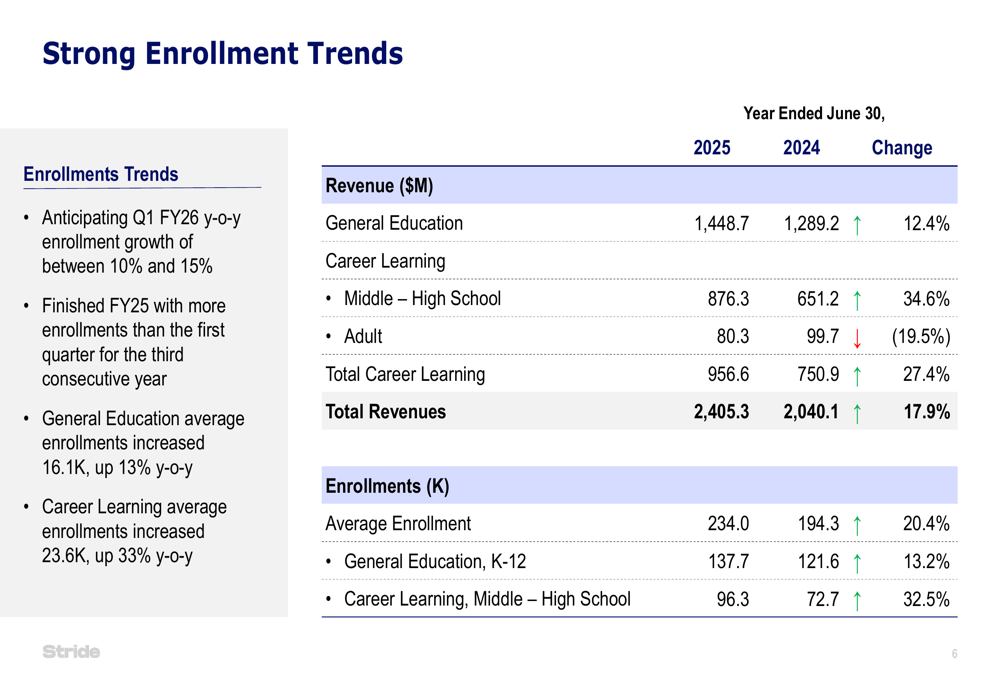
Strategic Initiatives & Growth Outlook
Stride maintains a strong balance sheet with $1.01 billion in cash, cash equivalents, and marketable securities, alongside low debt obligations of $503.2 million. This results in a negative leverage ratio of (0.49)x, providing significant financial flexibility for future growth initiatives.
The company’s solid financial position is detailed in the following slide:
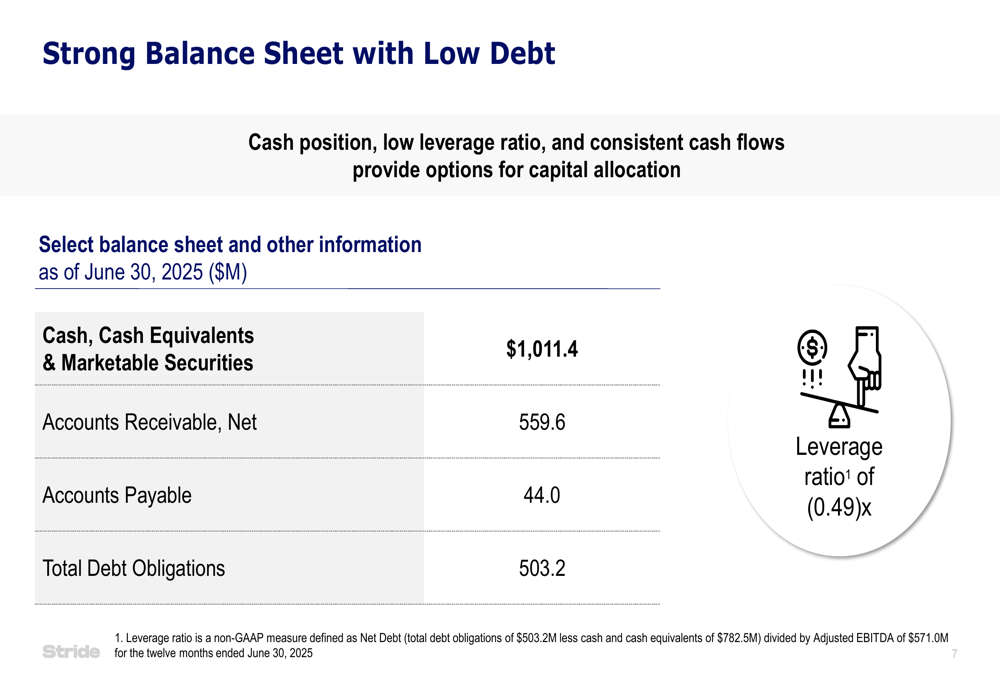
Management outlined a disciplined capital allocation strategy focused on three key areas: organic growth through investments in academic quality and technology advancements, strategic acquisitions that leverage the company’s platform across markets and verticals, and potential approaches to return cash to stockholders over the long term.
Stride’s long-term growth targets remain ambitious, with the company projecting FY2028 revenue of approximately $3.3 billion (representing a 10% CAGR from FY2023), adjusted operating income of $585 million (20% CAGR), and diluted EPS of $8.35 (20% CAGR).
The company’s long-term growth projections are visualized in the following charts:
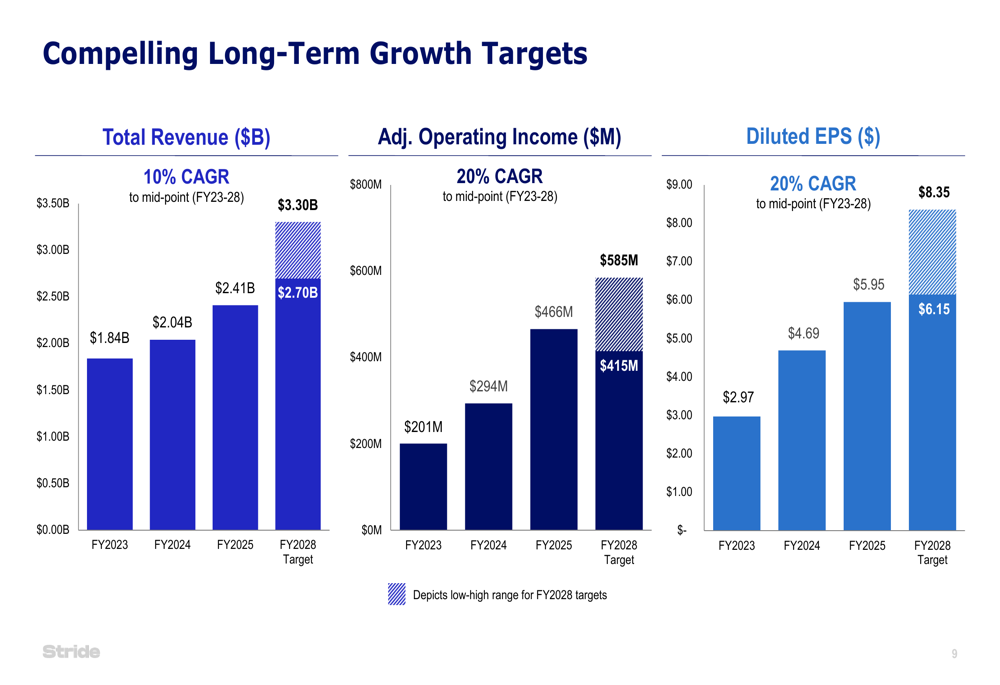
Forward-Looking Statements
Looking ahead, Stride remains well-positioned to capitalize on the growing demand for virtual education and school choice options. The company’s consistent enrollment growth, particularly in the Career Learning segment, suggests continued momentum into fiscal 2026.
During the earnings call, CEO James Rue emphasized the company’s strategic focus, stating, "We are not going to play into the hype around AI, but rather focus on foundational areas and technologies that we can leverage for better customer outcomes." This approach aligns with Stride’s disciplined growth strategy and focus on sustainable expansion.
The company’s investment thesis centers on its position as a disruptor in education with the scale, expertise, and long-term customer relationships to drive change. Stride continues to accelerate the secular shift toward virtual education while leveraging its capabilities to address market failures and shortcomings.
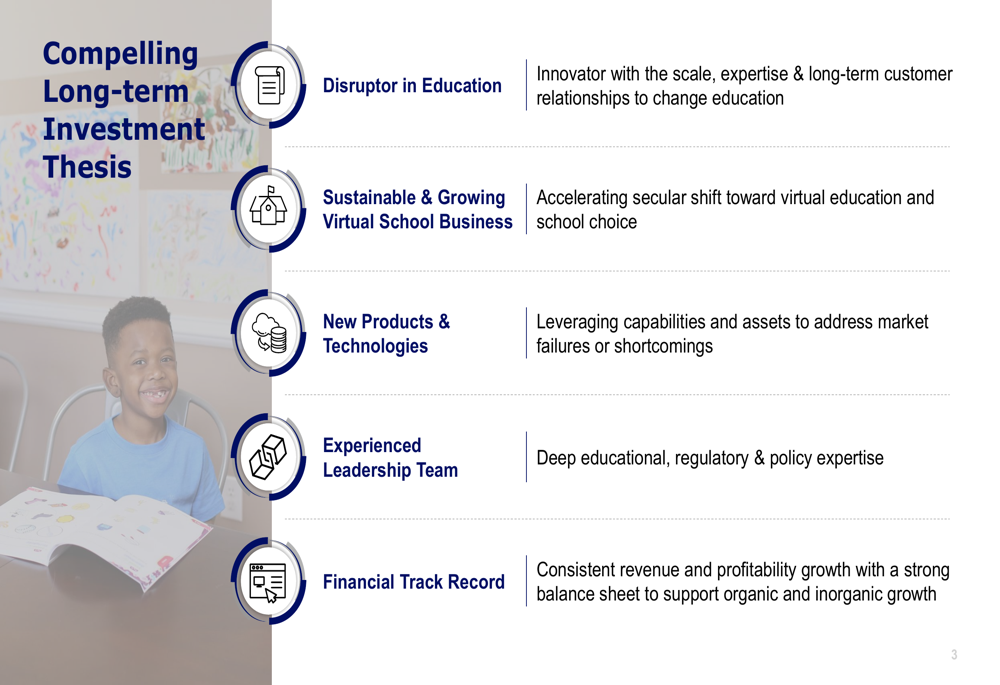
Potential challenges include changes in state funding that could impact revenue streams, intense competition in the education technology sector, and fluctuations in demand for school choice. However, with its strong financial position, consistent growth trajectory, and clear strategic direction, Stride appears well-equipped to navigate these challenges while pursuing its long-term growth objectives.
Full presentation:
This article was generated with the support of AI and reviewed by an editor. For more information see our T&C.
